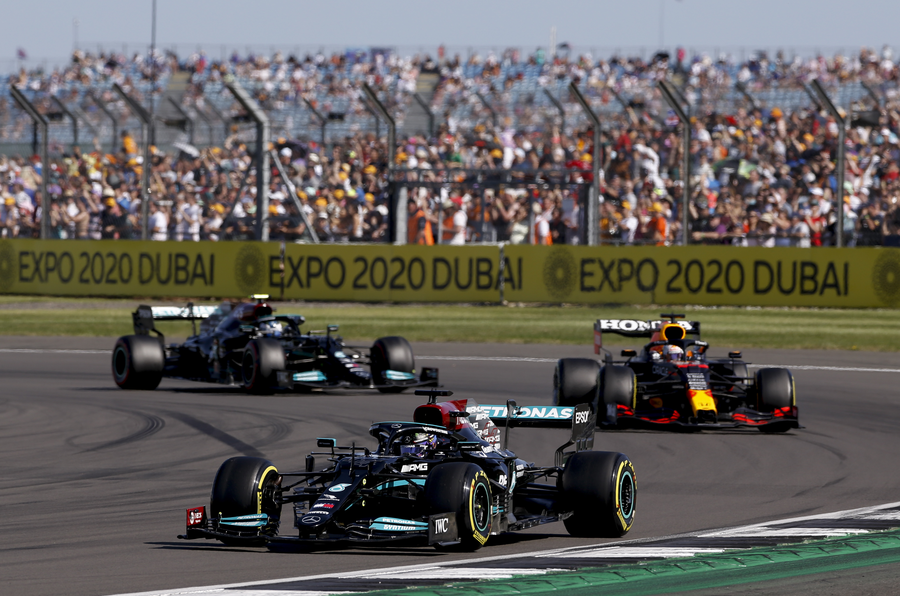It could hardly have been a more heartening experience to be back at Silverstone for the British Grand Prix along with some other 140,000 other fans at the weekend, after all the terrible hardships of the past 16 months.
The best Formula 1 crowd in the world had no need for masks or social distancing, either, thanks to the race being part of the UK government’s Events Research Programme.
Bedecked in the orange of McLaren's Lando Norris, the white of Mercedes-AMG's Sir Lewis Hamilton and the blue of Williams’ George Russell, they were as vocal as ever.
It makes perfect sense, then, that Silverstone was the venue at which F1 management decided to trial a new qualifying format. Alpine driver Fernando Alonso told me beforehand that he believed it was being introduced primarily for the benefit of the fans.
Usually, the drivers compete in a Saturday time-trial session to set the fastest lap, split over three sessions in which the field is whittled down from 20 to 15 to 10. The order of their lap times then decides the grid for Sunday’s grand prix.
Several qualifying formats have been tried in F1 since it dropped its original format in 1996, but this is one of the longest serving and in my view the best. One-shot qualifying never seemed to work as well or engage as much; aggregate qualifying was very unpopular; and the less said about the ill-conceived ‘five-minute window’ thing tried in 2016 the better.
At Silverstone, regular qualifying was held after the first free practice session on Friday morning, determining the grid order for a 17-lap sprint qualifying race to be held on Saturday, after second practice. The result of this sprint race would then set the grid for the grand prix proper.
The top three finishers also would receive three, two and one championship points – plus an old-school victory lap atop a flatbed truck wearing garlands. This might have looked cringeworthy on the TV, but it was well received by most of the trackside supporters.





Join the debate
Add your comment
As a viewer for more than fifty years, I thought the sprint qualifying was brilliant, a huge improvement on the usual format. Congratulations to F1 Management .
Great shout, Sabre! I had not thought about Mazepin being on pole and what that would subsequently bring! Should not be in an F1 car and I am sure he wouldn't if Daddy wasn't paying.
A single Sprint race is too early to decide, but this one did not prove positive. The reverse order is an interesting proposition, however Mazepin in pole position will bring the cost cap up due to necessary repair cost of most cars.